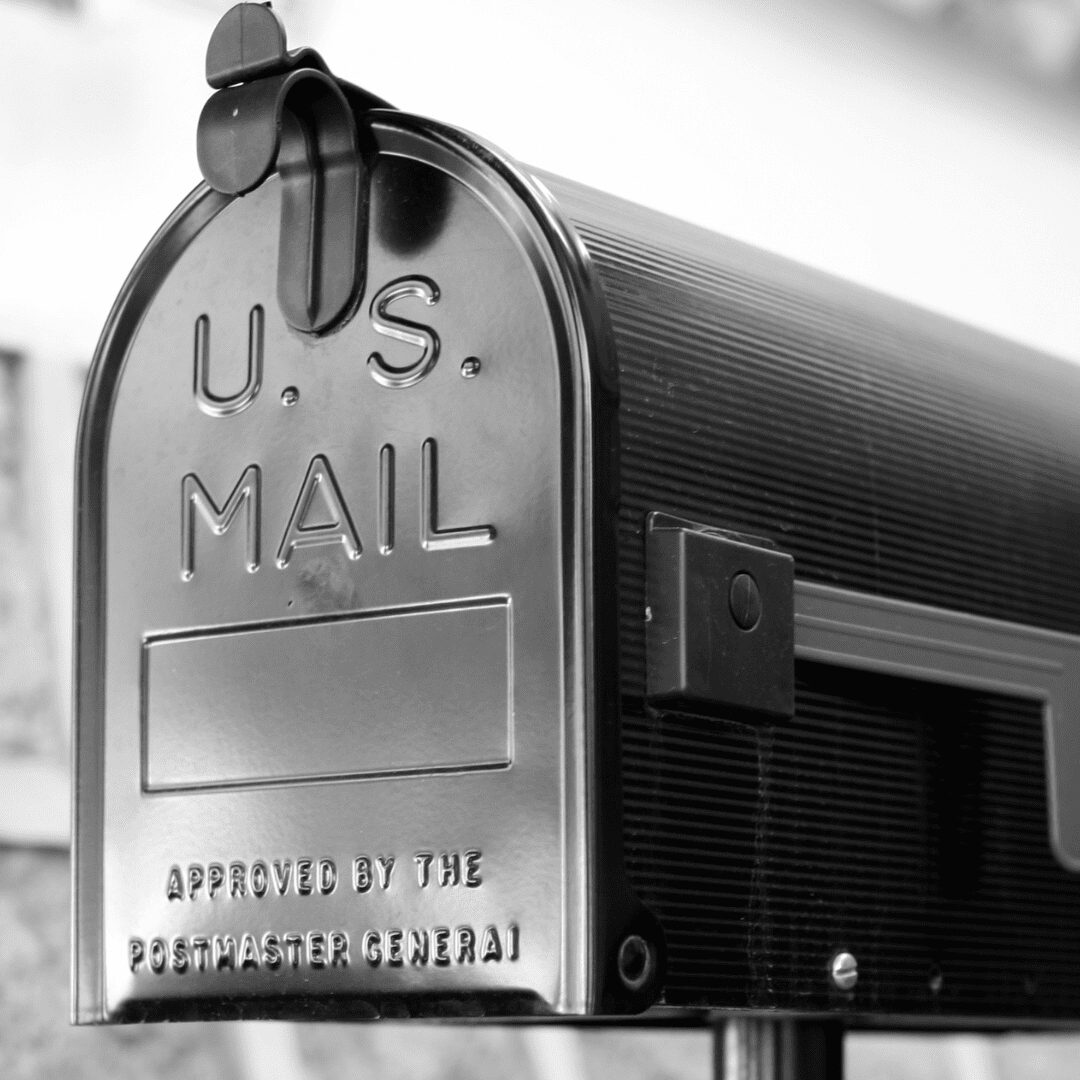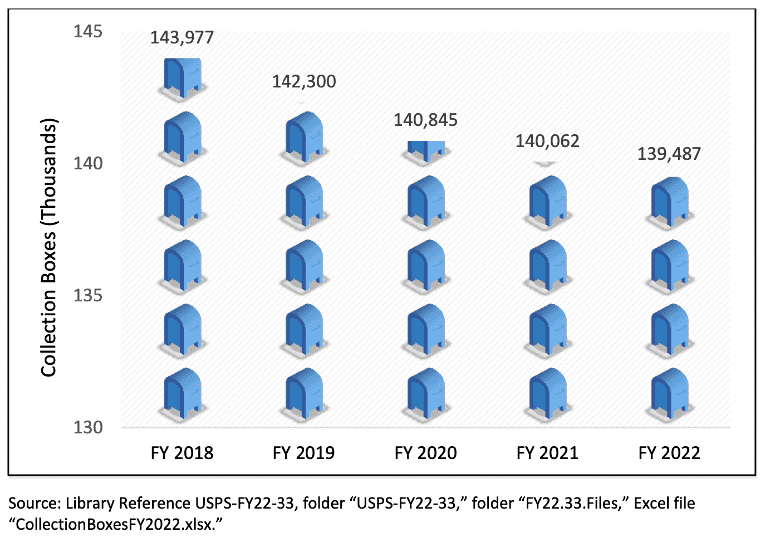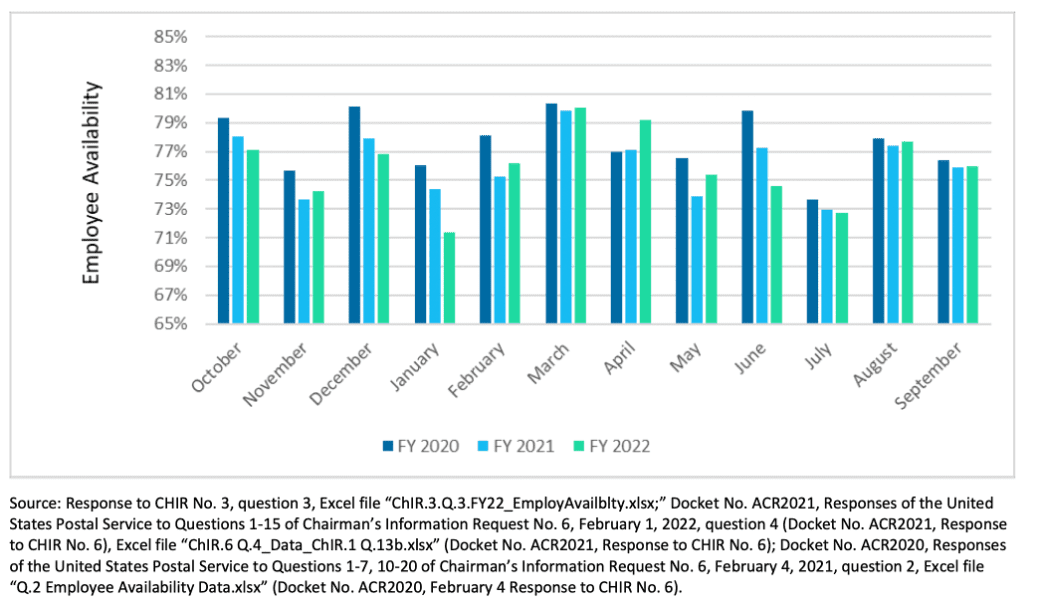
Three Takeaways from latest USPS Report Card
Ross Marchand
April 6, 2023
It’s exceedingly rare for federal agencies to get “graded” on how well they’re performing for the American people. The U.S. Postal Service (USPS) is an exception to this rule and gets an annual report card from the Postal Regulatory Commission (PRC) on the quality and cost-effectiveness of its services. And, judging by the recently released fiscal year (FY) 2022 Annual Compliance Determination, America’s mail carrier has its work cut out for it. The USPS is already about $2 billion in the hole for this fiscal year and is slated to lose $60-70 billion by 2030. The PRC’s compliance review gives some much-needed insight on where the USPS is flunking and where it can improve. Here are 3 critical takeaways from the PRC’s report:
- The USPS continues to face difficulties consolidating its delivery network.
Consolidation of the delivery network could have widespread and long-term cost-saving implications for the agency. When Postmaster General Louis DeJoy became head of the agency in early 2020, the logistics executive pledged to consolidate the USPS’ overbuilt network and keep costs under control. One key area of focus was mail collection boxes. There were simply too many boxes on street corners across America and their inefficient placement diverted valuable mail carrier time away from pressing priorities.
After viral images made their away across the web showing collection boxes being removed under DeJoy’s watch, public pressure forced the Postmaster to back away from his policy. As the below chart shows, collection box removals have resumed, albeit at a slower pace than before DeJoy assumed office. Far more, though, can and should be removed. In 2016, the Inspector General (IG) found, “Nationally the number of collection boxes declined by more than 12,000 in the past 5 years…Our analysis indicated an additional 1,808 collection boxes could have been removed and another 637 relocated.” In early 2020, the USPS identified an additional 30,000 collection boxes that could be removed because of low volume, but most of them remain standing.
Mail Collection Boxes in Postal Network, FY 2018-2022

2. Labor availability continues to be an issue.
The postal workforce is struggling mightily to deliver for the American people, with employee availability even lower than it was during the height of the pandemic. Declines are typically pronounced for the “busy” months of November-January.
Employee Availability, By Month, FY 2020-2022

Normally, private companies would respond to spotty worker coverage by quickly hiring temps as a bridge to a sounder long-term strategy. But, the USPS knows that any temporary worker it hires will likely turn into a permanent employee with significant compensation costs. Agreements with unions typically allow non-career employees in good standing to make the jump to career status, and the USPS is hardly in a position to refuse labor demands. Agreements with labor unions such as the American Postal Workers Union have resulted in low caps on the number of non-career workers that can be employed at any given time, and the USPS constantly finds itself on the verge of breaching these limits.
Congress could make the situation better by reining in the clout of powerful postal unions. For example, lawmakers could give USPS management unilateral authority to set caps on non-career employees. But ultimately, it’ll be up to postal leadership to do an about-face and embrace large-scale temporary hiring.
3. The agency refuses to revamp its package pricing process.
The USPS continues to underprice packages relative to delivery costs, resulting in significant blows to revenue. According to the agency’s FY 2022 Annual Compliance Report (made in advance of the PRC’s Compliance Determination), package revenues cover approximately 38 percent of all “institutional costs.” These costs are borne by the agency, irrespective of mail mix, and supposedly cannot be attributed to either regular mail or packages.
The theory is that not all costs (e.g., worker compensation, Inspector General audits, cybersecurity investments) can be assigned to different categories, and all is well if packages cover a certain percentage of these collective costs. The USPS claims that packages’ 38 percent cost contribution is more than enough because the percentage is “well in excess of either the previous required level of 5.5% or the 10% requirement derived from the [Postal Regulatory Commission’s (PRC)] formula.”
The 38 percent figure seems low considering that the weight of packages make up more than half of the USPS’ total haul. And, virtually all the USPS’ latest investments, including about $10 billion for new boxy trucks and about 250 new package sorting machines, are geared toward parcel deliveries.
The truth is that the institutional cost figure is only as good as the USPS’ willingness to attribute expenses. One cost category called “network travel” shows just how well the agency muddies the waters on product coverage. The USPS and PRC characterize “network travel” as the “time spent traveling between route sections” and claim that driving from one mailbox to another has no connection to any product category. But, if mail carriers need to start their routes (very) late to sort through an influx of packages, mailbox-to-mailbox route costs will be higher due to factors such as overtime costs and the inevitable spillover into rush hour traffic. Package-related route delays absolutely impact “network travel” costs, whether postal officials and regulators care to admit it.
And, when TPA points this out, the PRC refuses to consider pushing the USPS toward pricing reforms:

Source: FY 2022 ACD.
The PRC merely restates their assumptions about issues such as “network travel” in these dockets without seriously engaging TPA’s criticisms. A more thoughtful approach is sorely needed.
In Conclusion….
The 2022 Annual Compliance Determination should remind USPS leadership that the agency is not delivering on its promises. Far more work will need to be done to do right by taxpayers and consumers and get the USPS back into the black.
